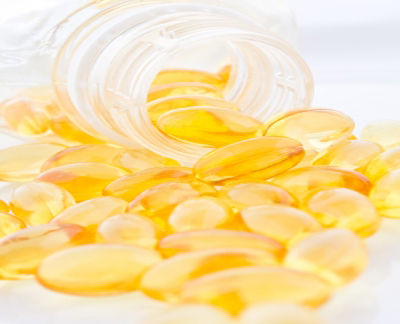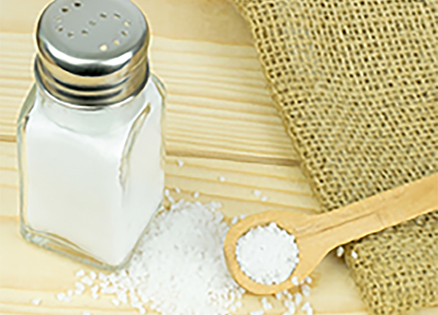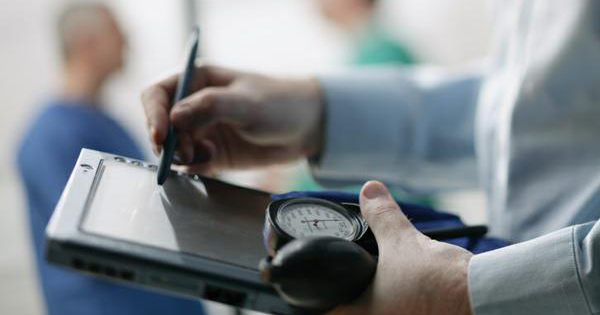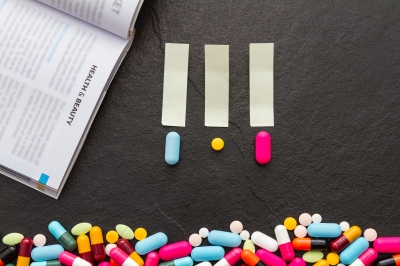Finding the Best Fish Oil Supplement
 Omega-3 fatty acids, like EPA and DHA, which are found in fish oil supplements, are clinically proven to help reduce inflammation. This means taking fish oil supplements regularly can prevent a host of health problems, including high blood pressure and heart disease. The team at Reviews.com spent weeks testing 184 of the most common over-the-counter fish oil supplements on the market. They consulted doctors and nutrition experts to see what their recommendations were, then used multiple third-party labs to assess each brand’s potency, purity, and freshness. They also consulted with the Marine Stewardship Council to verify which supplements were the most responsibly and sustainably made!
Omega-3 fatty acids, like EPA and DHA, which are found in fish oil supplements, are clinically proven to help reduce inflammation. This means taking fish oil supplements regularly can prevent a host of health problems, including high blood pressure and heart disease. The team at Reviews.com spent weeks testing 184 of the most common over-the-counter fish oil supplements on the market. They consulted doctors and nutrition experts to see what their recommendations were, then used multiple third-party labs to assess each brand’s potency, purity, and freshness. They also consulted with the Marine Stewardship Council to verify which supplements were the most responsibly and sustainably made!
Reviews.com’s Top Picks
- Nutrigold Triple Strength Fish Oil Omega-3 Gold — Contains 1,000 mg EPA+DHA per pill, which is a full recommended daily dose, and is thoroughly vetted by third-party labs
Alternate Foods Rich in Iodine to Replace Table Salt as You Lower Blood Pressure

One of the first dietary steps you can take to lower blood pressure is to cut back on salt. Salt contains sodium. By decreasing your salt intake, you decrease the level of sodium in your bloodstream allowing your kidneys to more effectively eliminate water resulting in a lower blood pressure.
However, salt is one of our main dietary sources of iodine. Iodine deficiency is not a common problem due to the fact iodine is added to table salt.
If you eliminate table salt from your diet you may need to shift your diet to include other sources of iodine.
What role does iodine play in your health?
Iodine’s main function is to support the development and function of the thyroid gland with hormone production.
Iodine also fights bacteria, promotes healthy breast tissue, supports hair and skin growth, protects against toxic effects of radioactive material, and is involved in energy production and nerve function.
What are iodine deficiency symptoms?
Some deficiency symptoms include:
• Depression
• Dry eyes
• Decreased mental capacity
• Fatigue
• Cold extremities
• Goiter
• Hypothyroidism
• Insomnia
• Weight gain
How much iodine do you need in your diet daily?
Continue reading
Do Probiotics Lower Blood Pressure?
 Probiotics have been linked to health benefits, such as improved digestion, reduced depression, a stronger immune system, and prevention of urinary tract infections. Researchers are now exploring a possible connection between probiotics and blood pressure.
Probiotics have been linked to health benefits, such as improved digestion, reduced depression, a stronger immune system, and prevention of urinary tract infections. Researchers are now exploring a possible connection between probiotics and blood pressure.
What are probiotics?
Probiotics are live bacteria and microorganisms that promote proper bodily function, especially within the digestive tract.
The body is full of “good” and “bad” bacteria. Probiotics are often referred to as “good”.
Probiotics are naturally found in the intestines to assist with food digestion, elimination of disease-causing microorganisms, and vitamin production.
Probiotics to lower blood pressure
How the body maintains a stable blood pressure is complex with numerous biological pathways. One pathway involves angiotensin converting enzymes (ACE) responsible for vasoconstriction of blood vessels. ACE inhibitors are blood pressure medications that inhibit the function of ACE. Probiotics have been shown to have similar ACE-inhibitory activity via the production of antihypertensive peptides. (FYI – Peptides are a combination of amino acids. Amino acids are the build blocks for protein.)
Researchers reviewed human studies on the effect of probiotics on blood pressure. Evaluation of nine trials found probiotic consumption to lower systolic blood pressure by 3.56 mm Hg and diastolic blood pressure by 2.39 mm Hg.
Greater blood pressure reduction was seen when multiple versus single species probiotics were consumed and if baseline blood pressure was above 130/85 mm Hg versus less than 130/85 mm Hg. Greater reduction was also seen in individuals who consumed the probiotic for a duration greater than 8 weeks.
This research analysis suggests probiotic consumption may modestly improve blood pressure levels.
Continue reading
How to Monitor Blood Pressure at Home
 High blood pressure is diagnosed when blood pressure is consistently equal to or greater than 140 mm Hg/90 mm Hg.
High blood pressure is diagnosed when blood pressure is consistently equal to or greater than 140 mm Hg/90 mm Hg.
According to the Centers for Disease Control and Prevention about 70 million adults are diagnosed with high blood pressure. This is equal to about 1 out of every 3 adults in this United States.
Blood pressure diagnosis is often based on clinic blood pressure readings. This is problematic due to a variety of factors resulting in inaccurate readings. Some factors that impact blood pressure accuracy include adequate rest period prior to blood pressure measurement, cuff size appropriate for arm circumference, and cuff deflation rate. Additional challenges to the clinic settings is whether or not the reading reflects the normal blood pressure level when outside the clinic setting. Many suffer from what is termed “white coat hypertension” where blood pressure rises in response to the medical environment.
Monitoring blood pressure at home is one step you can take to supplement clinic monitoring for a more complete representation of typical blood pressure levels.
A Joint Scientific Statement from the American Heart Association (AHA), American Society of Hypertension (ASH), and Preventive Cardiovascular Nurses Association (PCNA) encourages increased regular use of self-monitoring blood pressure for the majority of patients with hypertension to increase patients’ engagement and ability to manage their blood pressure, as well as enable the care team to provide appropriate and timely treatment.
Take these steps to monitor blood pressure at home:
Continue reading
Types of Blood Pressure Medications
 Many high blood pressure medications are available. Most options fall within these eight categories.
Many high blood pressure medications are available. Most options fall within these eight categories.
Diuretics
You may also hear diuretics called “water pills”. They increase the elimination of sodium and water by the kidneys. This decreases blood vessel fluid volume, which reduces pressure against artery walls, thereby lowering blood pressure.
The three classes of diuretic drugs include thiazide, loop, and potassium-sparing.
Examples of diuretics include:
- Chlorothiazide (Diuril)
- Hydrochlorothiazide (Microzide)
- Furosemide (Lasix)
- Bumetanide
- Amiloride
- Eplerenone (Inspra)
Beta-blockers
This drug category may also be called beta-adrenergic blocking agents. Beta-blockers inhibit the effects of the hormone epinephrine (aka adrenaline), resulting in a slower, less forceful heartbeat. Beta-blockers can also promote vasodilation (i.e. widening of the blood vessels). These two actions results in reduced blood pressure.
Examples of beta-blockers include:
- Acebutol (Sectral)
- Atenolol (Tenormin)
- Metoprolol (Lopressor, Toprol-XL)
Substitute Lean Pork for Chicken or Fish to Lower Blood Pressure

The DASH (Dietary Approaches to Stop Hypertension) diet is a plan to lower blood pressure levels. This approach incorporates a diet low in saturated fat and rich in low-fat-dairy, fruits, and vegetable.
The DASH diet includes lean, unprocessed meats in appropriate serving sizes, with two or fewer servings consumed daily. One serving of meat equals three ounces. For a visual, three ounces is about the size of a deck of cards.
A study published in the American Journal of Clinical Nutrition compared the impact of lean, unprocessed pork consumption with chicken and fish as dominant protein sources within this diet plan. Researchers determined lean pork could effectively be incorporated into a DASH-style diet promoting lower blood pressure.
Keep in mind, this only applies to unprocessed lean pork, such as tenderloins or uncured ham with visible fat trimmed. Research does NOT support adding other cuts or types of pork products that are higher in fat and salt to a DASH diet promoting low blood pressure.
Continue reading



